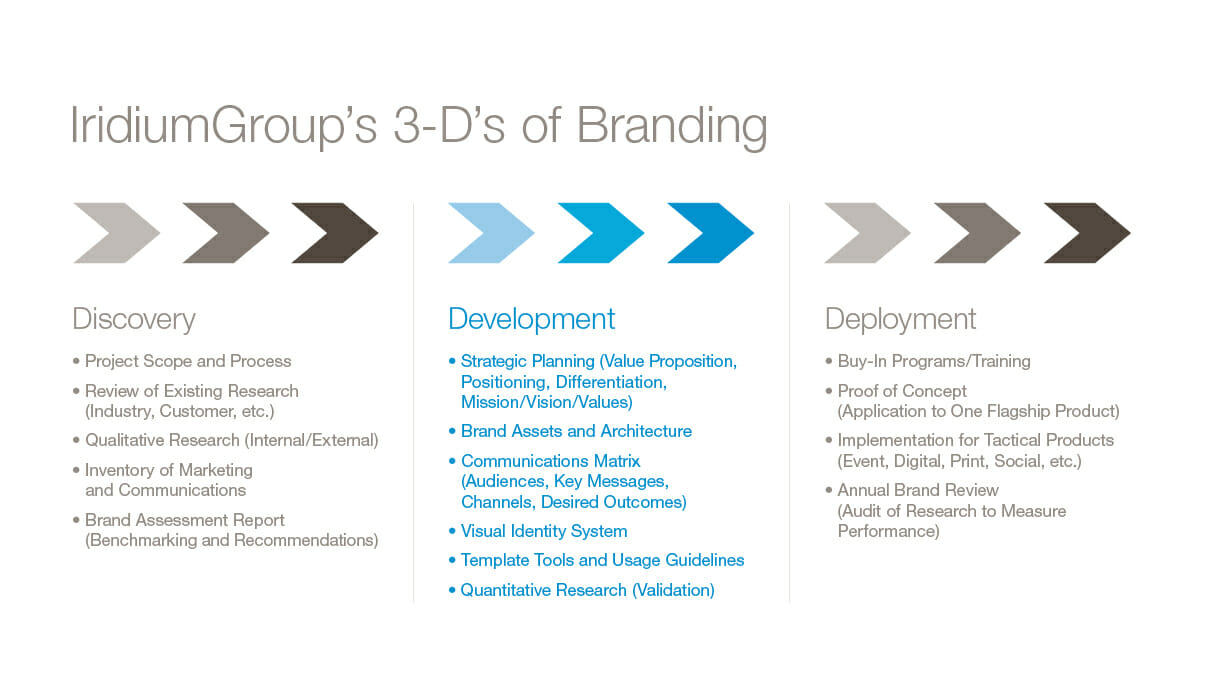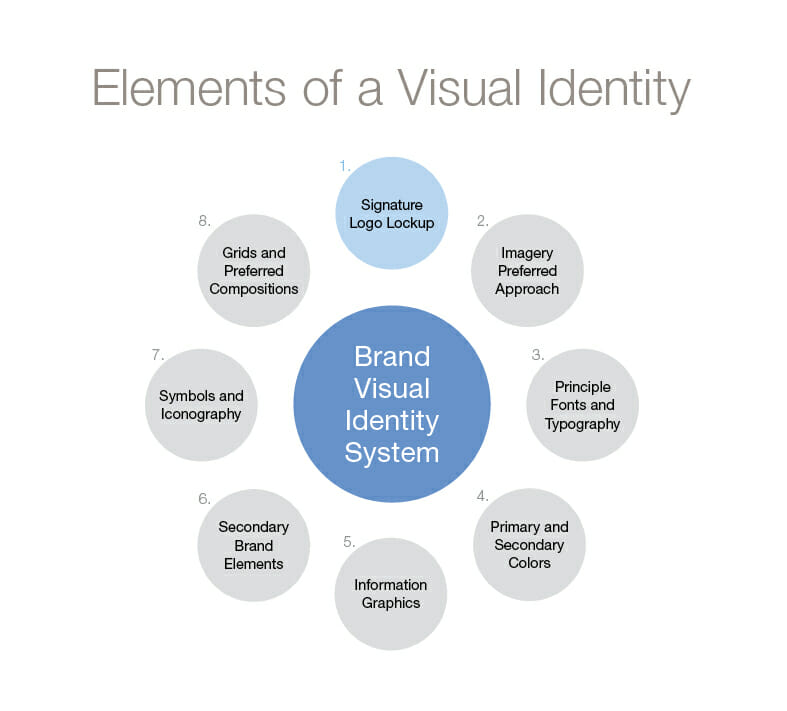 The Part II(b) work component follows through on further design and creation of brand assets and builds on the strategic planning and messaging work completed in Part II(a). This design step is one that defined IridiumGroup since about 2000, when we embarked on a long series of branding projects, and marks our core competency in the comprehensive area of developing and managing global brands. Like all other phases of work in this branding Blog series, each description warrants the thoughtful custom approach that is informed by the main deliverable in Part I, the Brand Health Report.
The Part II(b) work component follows through on further design and creation of brand assets and builds on the strategic planning and messaging work completed in Part II(a). This design step is one that defined IridiumGroup since about 2000, when we embarked on a long series of branding projects, and marks our core competency in the comprehensive area of developing and managing global brands. Like all other phases of work in this branding Blog series, each description warrants the thoughtful custom approach that is informed by the main deliverable in Part I, the Brand Health Report.
Visual Identity System
One of the great mistakes made during this creative process is a lack of proper diligence and thorough understanding of the brand — by agencies as well as client managers. By this time, if there has not been a proper phase of research (which also aids in building consensus) and a clear understanding of the brand’s strategic direction and value proposition, any success with the visual application is unlikely.
The visual signature of an organization (logo), and the accompanying elements that aid in expressing the brand (images, fonts, colors, iconography, data graphics, etc.) should be distinctive and unique; meet the needs of the defined brand strategy; and be an appropriate representation of the essence of the organization — its mission, vision, and values. In other words, it should “feel appropriate.” While it is creative-driven, is not a simple creative endeavor, so it is critical that all stakeholders have weighed in and that the process is structured clearly.
At IridiumGroup, we begin each presentation with a refresh of the strategy statements that drove the process. We also reflect on the original goals, work plan, and the process timeframe or work accomplished to date. We show a competitive set as a baseline, and may highlight a few comments from the qualitative research to support the creative presentation. Rationales are presented to support each creative decision that map directly back to the strategic assessments in Part I of the project. While “creative,” the process is more empirical and scientific than one might suspect.
Also, if there’s anything I’ve learned, it’s that small incremental progress — made in the form of small, agile, rapid iterations — is far superior to the traditional “waterfall” approach to the process. Client C-level managers should stay involved. Just because these early creative presentations may seem frivolous to key business decision-makers, they are critical building blocks to the final visual and message foundation of the brand.
The visual identity is deconstructed with each element being analyzed critically. Early presentations may take on the form of a mood board as we show designers’ separate studies into each of the components of the visual brand (see graphic), with thoughtful explanations providing the reasoning and strategic benefits gained from each approach. As the work continues, the iterations of creative presentation are incremental and should feel less like a designer’s surprise inspiration, and more like a patient, consistent path toward a measured — and consensus-building — end goal.
During the latter stages of the process, we begin to apply the system to the most important communications for look and feel, simply to see the new signature and system elements in context, to provide the client team with a better idea of possible applications.

Template Tools and Usage Guidelines
With the approval of the brand visual identity by executive and senior management teams and Board, we begin work on further development of template tools. To some extent, the project plan has taken this work into account, but it is not uncommon to define these products with more clarity once the visual identity is complete.
Brand usage guidelines, once referred to as corporate identity standards, have come a long way in 30 years. These “playbooks” were once exhaustive 100+ page style-guides. Today, they are created with the sole intention of providing concise, clear, useful benefits for all practitioners. They can include everything from messaging standards to in-store merchandising, to detailed specifications for application of the visual brand. The main goal is here to keep it simple, but identify the ways the brand is consistently applied. Large nonprofits with volunteers sometimes have a need to explain the benefits or value of a consistently applied brand, and inspire best practices among all creative practitioners.
Quantitative Research (Validation of Recommendations)
This is sometimes referred to as “back-end” research, and it may be qualitative (focus groups, mall intercepts, etc.), but more commonly it is quantitative — which presently translates to an online survey. The main goal is to identify and rectify any snags or potentially problematic issues. Platforms as simple as Survey Monkey may be employed. But the purpose is the same: to be the final reality check that confirms and validates that the brand’s visual identity is cohesively in alignment with — and supportive of — strategy, values, messaging, and positioning.
The post 3-D’s of Comprehensive Branding: Part II(b) – Development appeared first on IridiumGroup.


